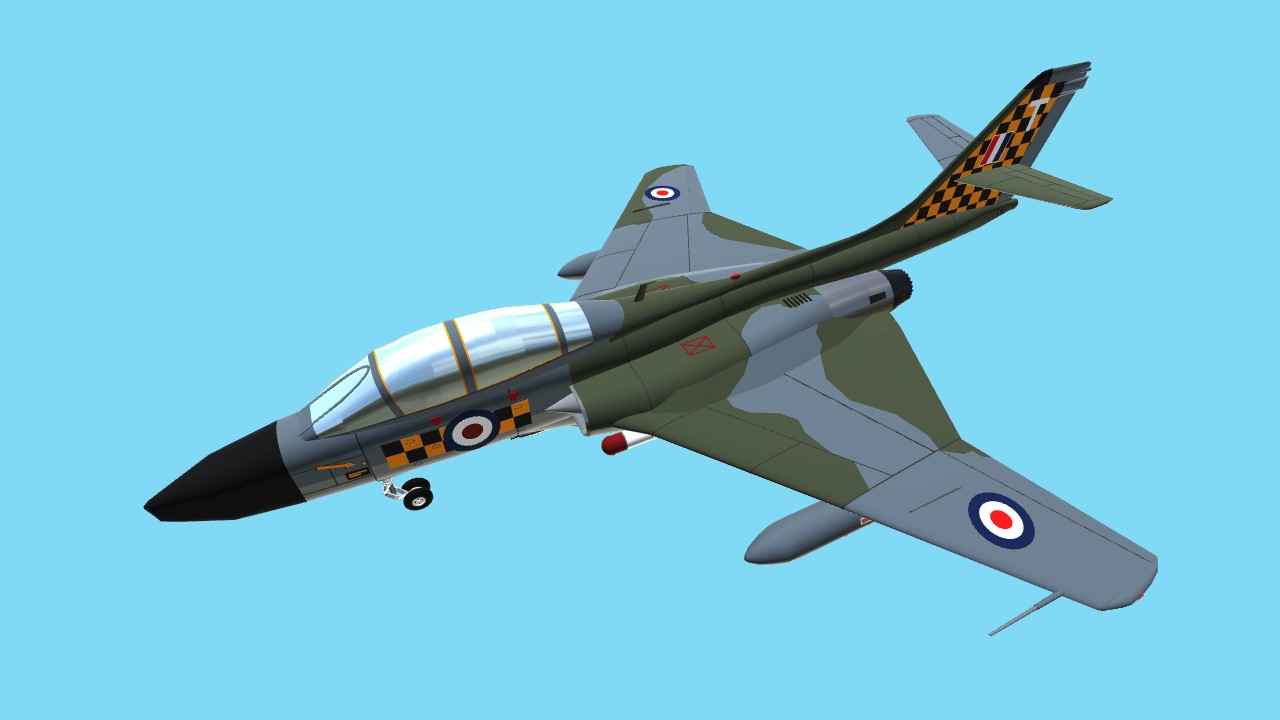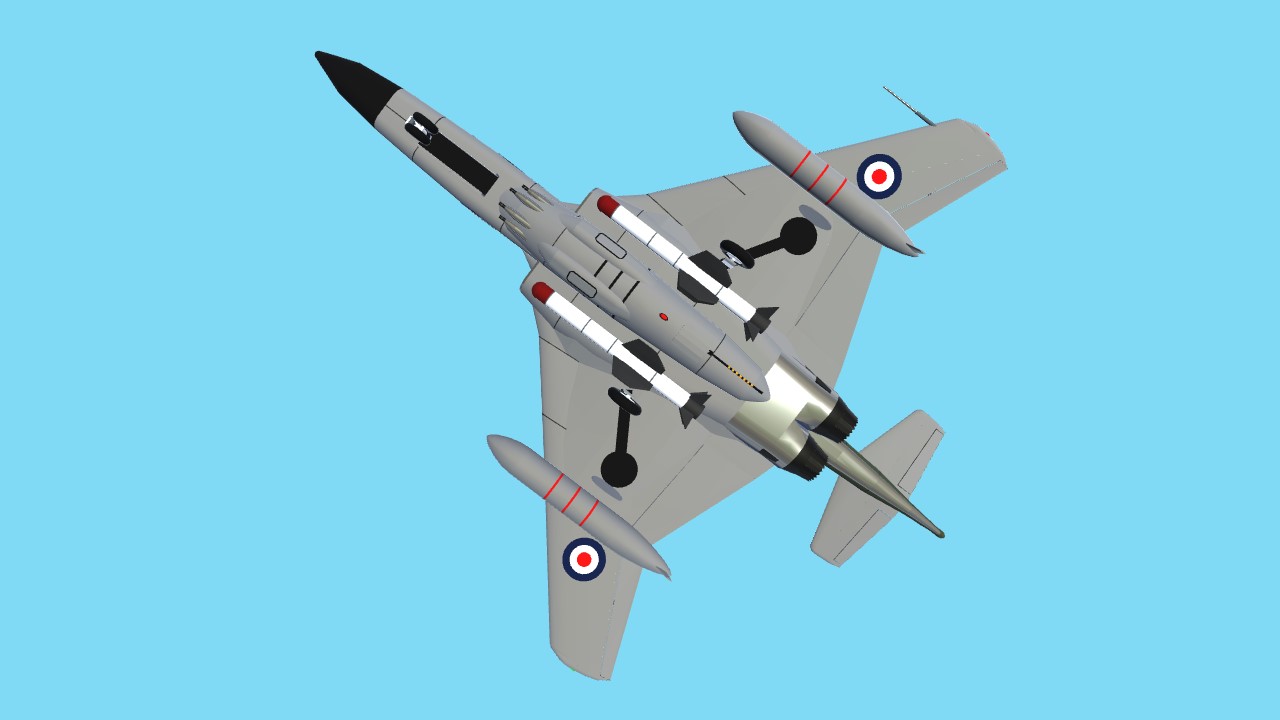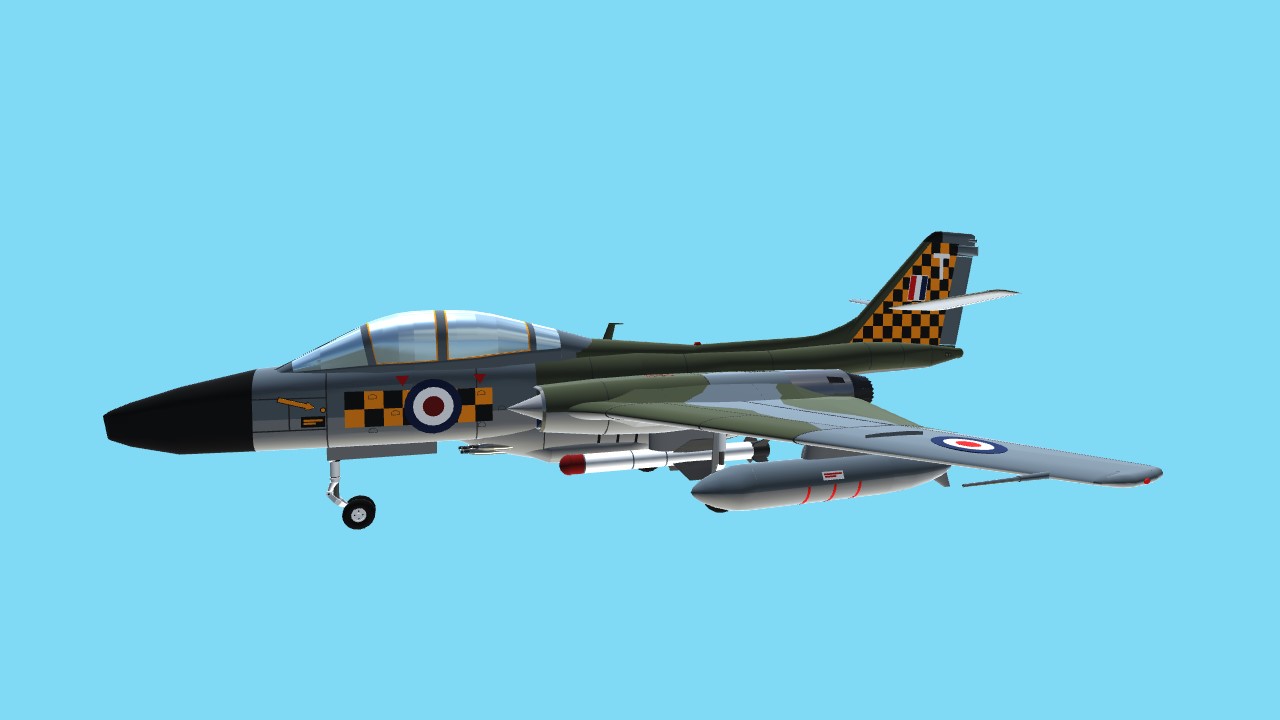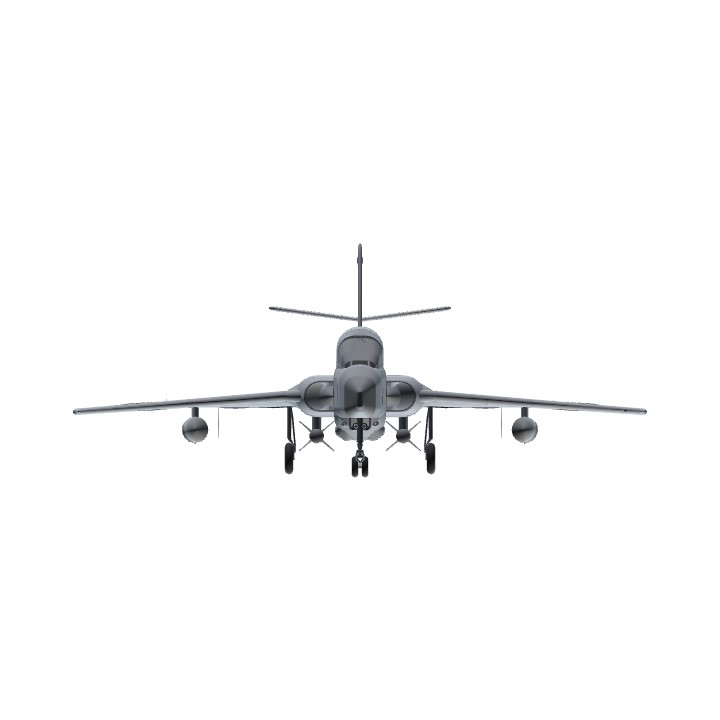The Gloster Lance is a twin-engined swept wing super-sonic night and all-weather interceptor aircraft that served with Britain's Royal Air Force from the mid-1950s until the late 1960s. The last aircraft design to bear the Gloster name, it was introduced in 1956 after a lengthy development period and received several upgrades during its lifetime to its engines, radar and weapons, which included the De Havilland Firestreak and Redtop air-to-air missiles.
The Lance was succeeded in the interceptor role by the English Electric Lightning, a supersonic aircraft capable of flying at more than double the Lance's top speed, which was introduced into the RAF only a few years later. The Lance served for much of its life alongside the Lightning; the last Lances were withdrawn from operational service in 1968 following the introduction of successively more capable versions of the Lightning.
In the aftermath of the Second World War, Britain identified a threat posed by the jet-powered strategic bomber and atomic weaponry and thus placed a great emphasis on developing aerial supremacy through continuing to advance its fighter technology, even following the end of conflict. Gloster Aircraft, having developed and produced the only Allied jet aircraft to be operational during the war, the Gloster Meteor, sought to take advantage of its expertise and responded to a 1947 Air Ministry requirement for a high-performance night fighter under Air Ministry specification F.44/46. The specification called for a two-seat night fighter, that would intercept enemy aircraft at heights of up to at least 40,000 feet. It would also have to reach a speed of at least 525 kn at this height, be able to perform rapid ascents and attain an altitude of 45,000 feet within ten minutes of engine ignition.
Additional criteria given in the requirement included a minimum flight endurance of two hours, a takeoff distance of 1,500 yards, structural strength to support up to 4g manoeuvres at high speed and for the aircraft to incorporate airborne interception radar, multi-channel VHF radio and various navigational aids. The aircraft would also be required to be economical to produce, at a rate of ten per month for an estimated total of 150 aircraft.
Gloster produced several design proposals in the hope of satisfying the requirement. P.228, drawn up in 1946, was essentially a two-seat Meteor with slightly swept wings. A similar design was also offered to the Royal Navy as the P.231. The later-issued P.239 and P.240 of early 1947 had adopted many of the features that would be distinctive of the Lance, including the large swept wing and large fin with the tail mounted part way up. In the end the decision was made to make one aircraft suit both requirements and thus be interchangeable (similar to how the Buccaneer ended up being used by both the RAF and Royal Navy with the Fleet Air Arm, hence it was fitted with both an arrestor hook and braking parachute.
The RAF requirements were subject to some changes, mainly in regards to radar equipment and armaments; Gloster also initiated some changes as further research was conducted into the aerodynamic properties of the new swept and delta wings, as well as use of the new Armstrong Siddeley Sapphire turbojet engines.




Thanks to Dimkal and Chichiwerx again for their feedback and guidance, big thanks to Chichiwerx for letting me use his afterburner technique (i edited its size and colour but the principle is the same), thanks also to Tang0five for his past inputs into my builds which have inspired me to get this far, Boggy has also had his influence on some parts (cockpit cough, cough).
Oh and big thanks to the wiki article on the Gloster Javelin which i altered to suit this aircraft...
Specifications
General Characteristics
- Created On Windows
- Wingspan 34.1ft (10.4m)
- Length 42.5ft (13.0m)
- Height 13.8ft (4.2m)
- Empty Weight 11,378lbs (5,161kg)
- Loaded Weight 23,446lbs (10,635kg)
Performance
- Power/Weight Ratio 3.45
- Wing Loading 28.3lbs/ft2 (138.4kg/m2)
- Wing Area 827.4ft2 (76.9m2)
- Drag Points 1456
Parts
- Number of Parts 840
- Control Surfaces 0
- Performance Cost 2,784







I love this build
@Itamar3553 thanks :)
Amazing! Great job!
@RamboJutter Indeed I did
@RamboJutter I like it! It also flies almost realistically and very nicely :D
jutter's using hollow were all out of business!
amazing work, as always.
@ChiChiWerx no worries, it turned out well in the end I think.
@RamboJutter np
@Minecraftpoweer @Roswell thanks for the comments, glad you liked it.
@MethaManAircraft yep, the British f101 :)
Other amazing piece of work.
This is really fun, by the way.
Holy crap, I completely forgot to test this for you...doh!
It's good and I like how it handles.
Voodo Child ;)